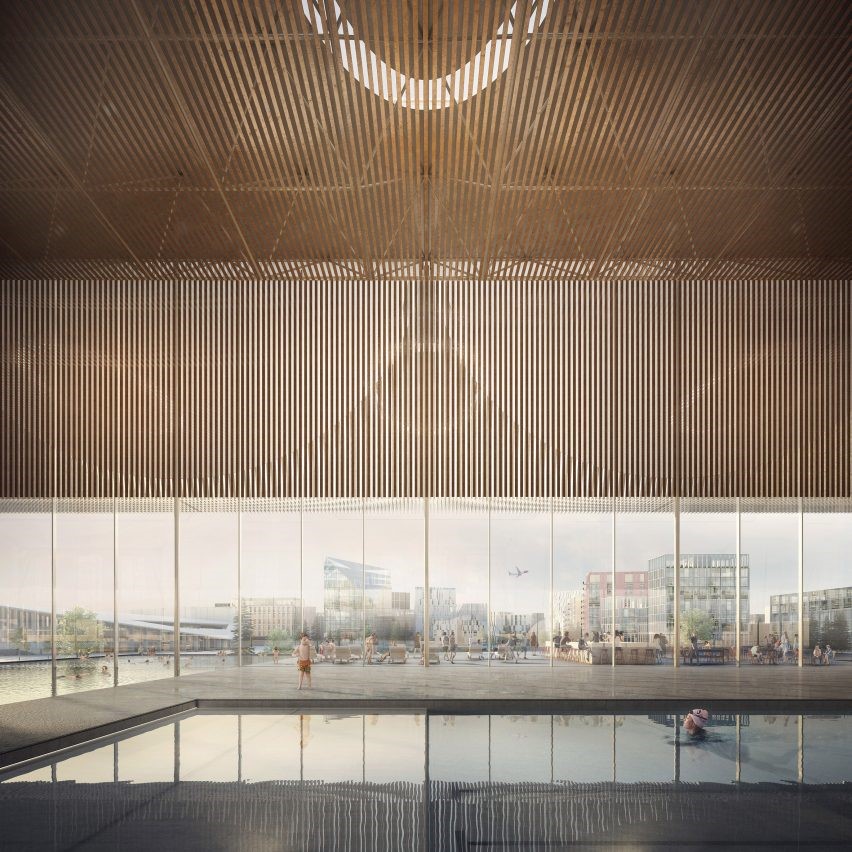The Nordic Office of Architecture and Haptic Architects intend to tackle at least one part of this equation in their plans to develop an 'Oslo Airport City' (OAC) adjacent to Oslo Gardermoen Airport, which is situated 45km north of the capital's downtown area in a semi-rural area and which already has an adjacent 'Business Park'. The difference here is that the airport city will be devoted to 'sustainability' in its task of testing autonomous systems.
Based in Oslo, with offices in Copenhagen and London, Nordic Office of Architecture is involved in projects in various countries across Europe, Africa, the Middle East and Asia.
Airport cities and Aerotropolises will be examined in detail at the forthcoming Global Airport Leaders' Forum in Dubai on 07-May-2018. VISIT the event's dedicated homepage for full details: Global Airport Leaders' Forum
The 370-hectare campus and 'smart city' aims to provide a testing area for autonomous systems including vehicles, lighting, mobility, waste, and security systems, covering four million square metres of cargo, logistics, commercial and residential space.
The campus will be powered entirely by renewable energy sources, with surplus energy generated to be sold to power to surrounding cities, making it what is claimed to be the "first energy positive airport city", although Cochin Airport in India might well argue that it has been doing that for several years now thanks to its solar power generation policies, with other airports also fast closing in on that target.
Construction of the 'Smart City' at Gardermoen Airport is slated to span 30 years, with phase one expected to commence in late 2019 Source: Nordic Office of Architecture
Source: Nordic Office of Architecture
In essence, the aim is that the campus, which will be designed from scratch, will be completely powered by self-produced energy and served by driverless electric vehicles.
OAC will only have electric vehicles, and the architects have promised that its citizens "will never be more than five minutes away from public transport", although in an age of immediacy that might be perhaps too long.
The new city will run on only the renewable energy it produces, and while it will sell the excess electricity to nearby cities, it will also be used for practical purposes at the airport, for example to de-ice aircraft.
Centred on a public park, the sustainable city will "cater to Norway's passion" for sports and outdoor leisure activities. Artistic renditions show a large indoor swimming pool with views of the city while a cycling route is depicted encircling a large lake populated by boats and paddler boarders, and geometric multi-storey climbing walls are shown placed on opposing banks. It does make you wonder how the inhabitants are going to find the time to work.
IMAGE - Artistic renditions show a large Olympic size indoor swimming pool with views of the city Source: Nordic Office of Architecture
Source: Nordic Office of Architecture
Oslo Airport's workforce is predicted to almost double from 22,000 employees to 40,000 by 2050. Along with workers and their families, the OAC will provide homes for a community of long-term residents, along with short-stay visitors passing through the transport hub.
Construction on the first stage of the city is expected to begin in late 2019, with the first buildings completed by 2022.

The OAC scheme has been backed by the Norwegian government, which is undertaking a shift away from oil to green energy, despite the huge importance of North Sea oil to the Norwegian economy. Oslo Airport, which is owned by the Norwegian government and operated by the wholly state-owned limited company Avinor - a global top 10 one by revenues - expects to run its own electric-only vehicle fleet by 2025.
Nordic Office of Architecture designed the original airport in the 1990s, as it did with the curving terminal extension which was completed in 2017, doubling the airport's size and expanding its capacity to 35 million passengers a year.
The practice is also the lead designer for Istanbul New Airport, which is due to open in its first stage capacity in 2020 and which aims to be "the largest airport in the world".
READ MORE: The world's top 10 airport cities were examined in detail in a Mar-2017 published CAPA - Centre for Aviation report: Aerotropolis Report: The world's top 10 airport city projects and attendant aerotropolises